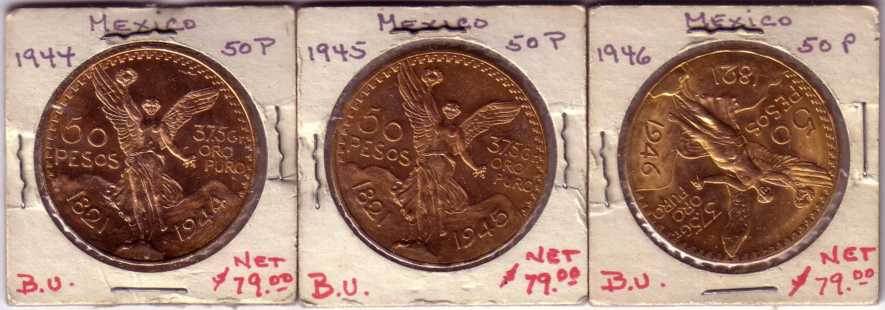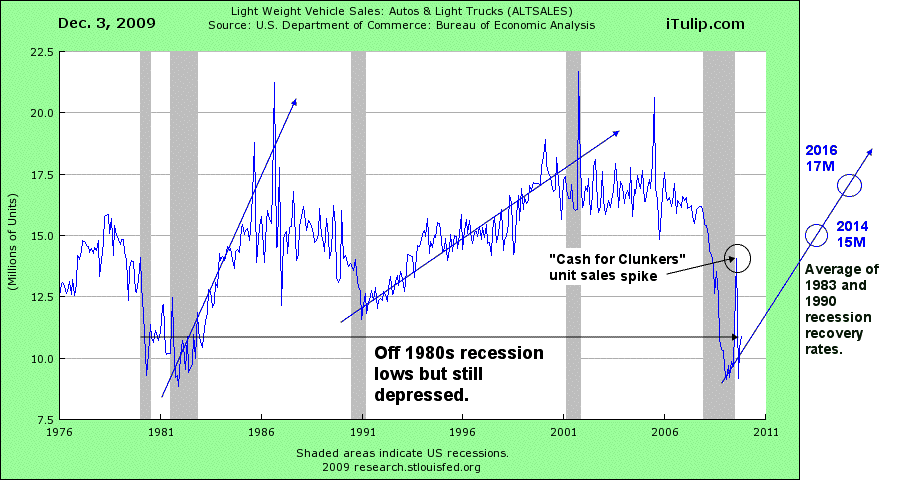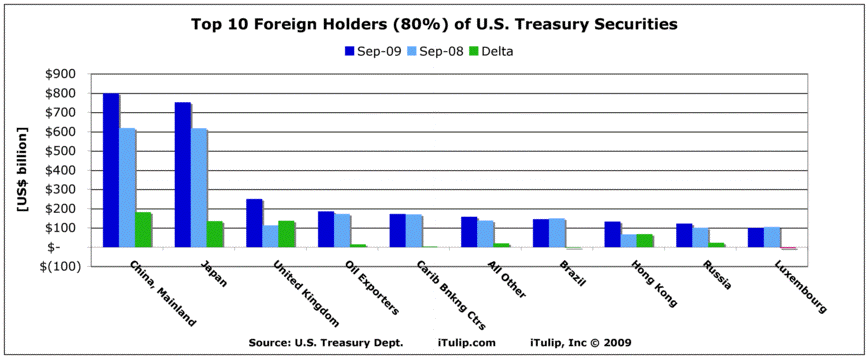 |
Asylum Markets of the post FIRE Economy – Part I: Locked Up
The past two U.S. economic recoveries were enabled by asset bubbles, first in stocks, then in housing. Monetary and fiscal stimulus was pre-committed by government reflation policy to counter the macroeconomic damage caused when they inevitably collapsed. As we forecast, Great Depression type commodity price deflation didn’t follow. Instead, we have the perverse side-effect of high unemployment, high commodity prices, and low profits. Stocks rise not due to future earnings but asset price inflation directly. Worse, the U.S. economy remains dependent on bubbles for economic growth, to generate incomes to tax, for receipts to finance outrageous government outlays. The economy cannot grow its way out of debt without them.
For the second time in ten years, reflation by government and monetary authorities has the economy growing, but we’re here to ask:
• Fewer foreign lenders are willing to bet on the U.S. economy. Can the U.S. economic recovery, financed by the lending of domestic commercial banks and foreign governments, become self-sustaining before the U.S. government runs out of credit?
• We need a Next Bubble to generate capital gains taxes on asset price inflation and jobs in bubble-supported industries to put the unemployed to work. Will we get one?
• How much can the economy grow before the next Peak Cheap Oil recession, due by 2013?
• Starting from a deep hole in economic output and a shockingly weak fiscal position, what happens to Treasury bond yields and the dollar in the next recession? Will the U.S. be in a position to double down on fiscal stimulus in the next recession, or will it have to fold?
• Market participants can’t differentiate between an organic, private-sector-led economic recovery and a government-financed recovery. When will they smell the end of the government-financed boom, constrained by a combination of fiscal and external debt thresholds?
• The recovery, current course and speed, isn’t generating new tax revenues fast enough to convince foreign creditors that the U.S. can grow its way out of debt. Too bad, because the U.S. has high foreign financing needs. Paradox: if foreign investors don’t bet that the U.S. can grow its way out of debt, it can’t.
• What kind of crash will we get if the Fed is forced to show discipline to foreign creditors and withdraws support too early in the recovery cycle?
• The madhouse market environment of the post FIRE Economy era, after the last reflation, is murder on us buy-and-hold investors. After the latest reflation, major asset classes that previously correlated to each other, positively or negatively, no longer do. Today stocks, bonds, and commodities all correlate to a third factor, monetary stimulus and deficit spending--to reflation policy. How can investors make rational investment decisions when governments, not markets, hold the key to asset prices? All assets except one, that is, the one that is a short on government: gold.
Note: The photos for this article are of the Northampton Hospital for the Insane, copyright © Shaun O'Boyle 2000 on his web site Oboyphoto.com, and republished here with his permission.• We need a Next Bubble to generate capital gains taxes on asset price inflation and jobs in bubble-supported industries to put the unemployed to work. Will we get one?
• How much can the economy grow before the next Peak Cheap Oil recession, due by 2013?
• Starting from a deep hole in economic output and a shockingly weak fiscal position, what happens to Treasury bond yields and the dollar in the next recession? Will the U.S. be in a position to double down on fiscal stimulus in the next recession, or will it have to fold?
• Market participants can’t differentiate between an organic, private-sector-led economic recovery and a government-financed recovery. When will they smell the end of the government-financed boom, constrained by a combination of fiscal and external debt thresholds?
• The recovery, current course and speed, isn’t generating new tax revenues fast enough to convince foreign creditors that the U.S. can grow its way out of debt. Too bad, because the U.S. has high foreign financing needs. Paradox: if foreign investors don’t bet that the U.S. can grow its way out of debt, it can’t.
• What kind of crash will we get if the Fed is forced to show discipline to foreign creditors and withdraws support too early in the recovery cycle?
• The madhouse market environment of the post FIRE Economy era, after the last reflation, is murder on us buy-and-hold investors. After the latest reflation, major asset classes that previously correlated to each other, positively or negatively, no longer do. Today stocks, bonds, and commodities all correlate to a third factor, monetary stimulus and deficit spending--to reflation policy. How can investors make rational investment decisions when governments, not markets, hold the key to asset prices? All assets except one, that is, the one that is a short on government: gold.
I hear from a dozen newly minted, self-styled gold experts who hit the market commentary circuit recently that after 20 years becalmed in silent seas the gold market is now crowded and frothy. A few dare say it’s headed for a crash to “fair market value” in the neighborhood of $100. While a recent dip in prices appears to confirm this view, they’re wrong.
If you’re new to iTulip, or if you’re not but are forgetful, indulge me a few paragraphs of background.
I’ve been in and out of gold investing for nearly 40 years, since my uncle hit the road from Oklahoma City in 1972 and headed south across the rough, flat south Texas desert, through the yukka and dayflower, for the gold shops along the Mexican border where proprietors didn’t care much for the laws forbidding gold bullion ownership by U.S. citizens, on the books since 1933 and repealed in 1975.
He and my father worried then that the Nixon administration aimed to flush the U.S. dollar (a currency lovingly dubbed the "bonar" here at iTulip) down the toilet. They feared wreckage of the economy from inflation, the perennial fallout of war and unfunded social spending programs.
They were right. President Richard Nixon and Fed Chairman Arthur Burns did both. Evidence appeared as rising inflation in 1975, the year gold bullion ownership became legal once again. But my father and uncle saw it coming, and bought gold four years before.
An ounce of gold sold for $58.20 outside the U.S. that year. The Mexican 50 peso weighs 1.2 ounces. The bullion value was $69.84. With a hefty 12% premium, they sold for $79.00, the price marked on packages in red.

The three coins scanned in their original holders are all that remain of that expedition, inherited by me when my father passed away in the early 1990s. I had more but sold them then.
The 1990s were not years to own gold, during the heyday of U.S. equities markets, fueled by uniquely American grandiosity that capped decades of folly. We recovered from every self-inflicted injury unscathed, from The Great Inflation of the 1970s, to the S&L debacle of the 1980s, to the 1987 stock market crash.
These were the halcyon days of the seemingly indestructible FIRE Economy, with its endless capacity to enrich us all with inflated asset prices, creating millions of jobs yet leaving commodity prices and wage rates untouched. Unemployment fell to low single digits and the economy grew fast while interest rates stayed low to fuel further asset price growth. An economic perpetual motion machine—all output and no input. Just add money. Brilliant.
Judging by October 2009 celebrations when stock indexes retook nominal levels that were first achieved during the FIRE Economy’s peak ten years earlier, an event as vital and momentous as a New Kids on the Block comeback tour, it appears that nostalgia for that heady, joyous era has yet to wear off, nor has its ephemerality been realized, never mind internalized.
Conversely, the countercyclical to the U.S. stock market as a measure of U.S. economic power and vitality—gold—displayed the sad process of dissolution and rot for all to see by rising in price throughout the entire pathetic episode, from the technology stock bubble and crash to the subsequent reflation of the economy via a housing bubble, to the crash that followed that, and the reflation after that, still in progress. All the while, with minor perturbations, gold keeps rising.
Let's draw the line even farther back, past the bubbles, to the early 1970s when the U.S. threw off the discipline of the creditor nation, to maintain a trade balance and international reserves in gold sufficient to cover foreign obligations. Ten chaotic years followed as the global monetary system adapted to the fiat dollar standard. At the end of the decade, as the new order fell into place, the only discipline that remained for the U.S. was to keep commodity and wage inflation low. High asset price inflation didn't count. In fact, it became policy.
You could buy one of the Mexican 50 peso coins off of me for $1,400 today, 18 times the purchase price, purchased before the system developed that ultimately resulted in the Asylum Markets we find ourselves in today.
If I were selling.
Which I’m not.
A Bubble in Ignorance
Why not? Isn’t the gold market a fool-packed bubble? Isn’t gold over-priced at $1,100? Won’t the dollar surge and crash gold prices when the U.S. government comes to its senses, raises interest rates, cuts spending, and otherwise “bites the bullet” politically? Won’t the gold bubble then pop, just as t did after 1980?
The political-economic forces that drive gold’s price cannot be so suddenly reversed. They manifest decisions made more than 30 years ago about the role of the U.S. in the world economy that made sense, at least for the U.S., at the time, but since at least the late 1990s no longer do.
Thirty years of the FIRE Economy, with its asset inflations, deflations, and reflations, its special relationships with foreign lenders who financed the game, its tax and regulatory programs geared to asset special interests, its public debt policy to take from the future and give to the present, brought us here—to the Market Asylum. It’s a place where interest rates cannot be raised, nor lowered, because at rock bottom they sit at the level where the over-leveraged private and public sectors need them to stay. Where taxes cannot be cut because the deficit already stretches even the most entangled creditor’s credulity. Yet no new asset bubbles can free us from the Asylum’s walls because the private credit markets have developed the generational timidity that's typical of all crash survivors.
Fund managers and retail investors alike watch their wardens’ every move from inside the Asylum for signs that indicate their intentions, for even a word from them has more weight than the decisions of one million wards acting according to their own judgment and needs.
It’s not 1980 all over again for gold, with lines of panicky buyers circling a block to buy coins from a dealer—no ETFs in those days—fearing that the price might go to infinity while the purchasing power of their savings, then averaging 8% per year, crashes to zero.
Circumstances for the average family are fundamentally unlike 1980, and even the small community of investors that is not timid about owning gold fails to comprehend how and what it all means.
We are at the end of the FIRE Economy era that produced the boom that supported the rising dollar that displaced gold as the international curency, the world’s oldest and the fallback of governments and central banks when everything goes wrong with international politics. We are at the start of a new phase of global geopolitical evolution, but no one knows exactly what it is.
I have a hunch that the new world that is coming will be better. But before it gets better, it has to get a lot worse because entrenched interests don't give up without a fight.
 |
If I sell gold today, what shall I buy with the cash that is not as expensive or even more expensive than gold?
In 1980, when gold peaked at $3,000 in 2009 dollars, investors had the option to sell gold and buy a 30-year Treasury bond that was so cheap they'd earn 15% interest until the year 2010. Today, when gold is supposedly a “bubble,” a 30-year bond earns only 4.3%, maturing in 2039. Is that cheap?
What’s cheap? Stocks? Corporate bonds? Real estate? Emerging markets? Commodities? Oil?
In the Asylum Market, all asset classes are correlated to government policy to dish liquidity to minimize the macro-economic impact of the latest crashing asset bubble and halt the process of asset price deflation and default.
Logically, when that policy is finally reversed and liquidity is withdrawn, all asset prices will correct: bond yields rise, gold prices fall, stock prices fall, housing prices fall. But only in the short-term, as we’ve forecast here and seen twice since we started up in 1998.
In the short-term, all assets correlate to government monetary policy. In the long-term, one stands out as negatively correlated to the weakened and weakening structure of our economy, and with it our reduced economic, political, and military position in the world--all that underpins the value of our currency.
Longing to Own Stocks
We’d like to own stocks. But it hasn’t been time to own stocks since March 2000 when iTulip readers got out of the stock market. It’s been time to be in gold since 2001 when iTulip readers read Questioning Popular Financial Advice.
Our thesis is not the standard gold bug line.
One, the global monetary system is broken and central bankers know it. They won’t sell off their gold and push to price down to $100 because they don’t trust the global central banking system they comprise. They need gold as a fallback.
Two, the U.S. economy is a madhouse of tax, regulatory, and monetary policies geared to special interests. To the Military Industrial Complex add the Banking Industrial Complex, Health Care Industrial Complex, Education Industrial Complex, Real Estate Industrial Complex, and on and on.
Three, I saw the Fed corruptly ignoring bubbles, and expected it to just as corruptly use our nation’s sovereign credit to bail out the bankers that are getting rich off the bubbles. After the bubbles collapse and endanger our economy, reflation policy will imperil the nation’s solvency with emergency spending supports for the macro economy.
Most Americans do not understand that all that stands between a U.S. and some form of sovereign debt and currency crisis is the shared interests of its trade partners, especially China, that I termed Economic M.A.D. in 2006, a phrase that has since entered the lexicon of debate at the highest levels of government in the U.S. and China.
The gold market we entered in 2001 was derelict and abandoned. Eight years later I’m supposed to believe that the gold market is over-crowded because a handful of previously oblivious financial market commentators suddenly noticed that gold prices have been rising every year for eight years.
Big deal. So now I don’t have to dig through the Wall Street Journal to find the gold price. As of this year, it’s right on the front page. Fund managers who aren’t gold bugs are buying it. Gold ads bug us from the TV and radio. To the new gold experts this means gold sentiment is now too bullish. We’re due for a crash.
Have they noticed that the gold ads are about selling not buying gold? One of the predictably horrific outcomes of the policies crafted by special interests that created the economic crisis is that 80% of the population doesn’t have any liquid net worth to invest in gold. Instead, they have to sell gold to pay property taxes and repay debt. Ask your local coin dealer when he sees the most customers come in to sell. He’ll tell you quarter end when real estate taxes are due.
There’s gold bubble alright, in ignorance about gold. Ninety-five percent of North Americans think of gold as a foreign land inhabited by bloodthirsty cannibals who drink lizard blood for breakfast. Of the five percent who aren’t afraid of it and think they understand it, only one percent actually does. They think gold has something to do with inflation. Or the dollar. Or financial risk. They confuse cause with effect, the symptom for the illness.
The propaganda that spreads misguided beliefs about gold is as ubiquitous as it is relentless.
Listen to Wall Street’s sales and marketing: Gold doesn’t pay a dividend. Gold doesn’t pay interest. Never mind that gold has not finished one year below its New Year’s opening price in more than eight years. Instead, to get rich go into debt to buy a house. Debt is wealth. According to economists, houses are cheap again three years after the start of the collapse of the housing bubble, a bubble that the very same economists in 2006 claimed didn’t exist.
Today the government will pay you $8,000 to buy one, the way they paid you $4,500 to buy a new car in October. Look how well that worked out for the auto industry.

"Cash for Clunkers" produced brief unit sales spike to 1986 unit sales volume before falling back to 1983 levels, back when the U.S. economy was 2/3 its currency size. Current course and speed, the market will not recover to pre-crash levels until 2016.
Wall Street tells you that the S&P with a P/E of 88 is a bargain. Better get in before earnings rise with recovery and prices go up even more.
Gold? Scary. Risky.
Back in 2001, they told us gold was risky because historically the price doesn’t perform as well as stocks in the long term. Now they tell us gold is risky because the price did perform better than stocks in the long term, and that makes it a bubble, say the madmen running the Asylum.
I badmouthed Amazon in 2000. I was wrong. I underestimated Jeff Bezos. Great opportunity for me to learn from my mistake. What is it about gold detractors that keeps them from learning from their mistakes? They’re education-proof. Brainwashed.
Listen to the propaganda. Stocks and houses? Those are nice, safe investments, the land of milk and honey where good men give up their seats on the bus for old ladies. That’s what Wall Street’s media says, and as long as Wall Street’s government is in power, and until they run out of money to make it so, to inflate housing prices, what they say conforms roughly to fact.
Yet the data over the past ten years contradict the argument that houses are better than gold. But who cares about data? Stocks and houses are what Wall Street's selling. Soon it will be selling carbon credits, as the economy chokes on new taxes and fees on energy use when all we needed to do was tax oil imports and use the revenue to finance projects to reduce transportation inefficiency. But investment banks can’t earn fees on direct taxes by government, so we'll get a byzantine new tax and fee system instead.
Even if you escape Wall Street’s propaganda machine, there’s no getting around government tax and regulatory policy geared to FIRE Economy interests. Stocks and houses are the asset classes that the government subsidizes through tax credits and loan guarantees.
The banks are the other big winners. Savings interest is taxed while interest on debt is deducted from taxes on income. Gee, I wonder why the savings rate since 1980 is so low? The temporary spike since the middle of the recession will end by the middle of 2010.
The U.S. fiscal deficit at 11.2% of GDP, and external debt at 94% of GDP, are nearly twice the maximum 6.4% and 50% thresholds that tripped every one of 70 countries that suffered a sovereign debt crisis since 1970, countries that had the misfortune to owe their debts in foreign currencies. Meanwhile, the only asset you can buy to reliably protect yourself from the inevitable consequence of mad economic policies—gold—is taxed as a “collectible” at 28%.
Gold also happens to be the only commodity that central banks possess. That fact alone makes gold something other than a mere commodity. Do they keep gold on their balance sheets because they are crazy or to protect themselves from each other and the policies of their respective host governments as they pursue popular government spending policies?
Can everyone go bankrupt all at once?
Ten years ago I told you that as the global monetary system started to stop working for all of the players, they’d fall back on the Fourth Currency. Right on cue, as governments around the world produced an orgy of spending to stimulate the economy out of the worst recession since The Great Depression, central banks recently became net gold buyers.
This lowers career risk for fund managers who wanted to take a gold position anyway and represents an important stage in the process of the decommissioning of the dollar as the world’s primary reserve currency.
Gold’s recent rise has nothing to do with inflation in the 1970s sense, and anyone looking for a carbon copy of 1977 will be disappointed. The rise has everything to do with the value (quality) of the goods and services you can buy with your dollar-denominated income and savings. For evidence, just look at the value of stocks and bonds you can buy with dollars these days.
Or food at grocery stores and restaurants. Inflation, as we pointed out in April 2008, is not only rising prices but also a declining quality and quantity of goods and services. It's a less easily observable but equally pernicious process of the erosion of the purchasing power of your labor and savings, the only meaningful definition of inflation that exists.
Deficits will Matter
Don’t worry about the deficit, we’re told. Eleven percent of GDP is no big deal because we don’t have to maintain currency reserves. We owe our foreign debt in our own currency. What if the game changes? It is changing, but it is not likely to change suddenly.
A sudden shift to a multilateral currency reserve system from a dollar dominated one will bury the U.S. If the U.S. is buried then the world is buried, and every member of government worldwide above the level of under-secretary knows it.
Wall Street tells you that the S&P with a P/E of 88 is a bargain. Better get in before earnings rise with recovery and prices go up even more.
Gold? Scary. Risky.
Back in 2001, they told us gold was risky because historically the price doesn’t perform as well as stocks in the long term. Now they tell us gold is risky because the price did perform better than stocks in the long term, and that makes it a bubble, say the madmen running the Asylum.
I badmouthed Amazon in 2000. I was wrong. I underestimated Jeff Bezos. Great opportunity for me to learn from my mistake. What is it about gold detractors that keeps them from learning from their mistakes? They’re education-proof. Brainwashed.
Listen to the propaganda. Stocks and houses? Those are nice, safe investments, the land of milk and honey where good men give up their seats on the bus for old ladies. That’s what Wall Street’s media says, and as long as Wall Street’s government is in power, and until they run out of money to make it so, to inflate housing prices, what they say conforms roughly to fact.
Yet the data over the past ten years contradict the argument that houses are better than gold. But who cares about data? Stocks and houses are what Wall Street's selling. Soon it will be selling carbon credits, as the economy chokes on new taxes and fees on energy use when all we needed to do was tax oil imports and use the revenue to finance projects to reduce transportation inefficiency. But investment banks can’t earn fees on direct taxes by government, so we'll get a byzantine new tax and fee system instead.
Even if you escape Wall Street’s propaganda machine, there’s no getting around government tax and regulatory policy geared to FIRE Economy interests. Stocks and houses are the asset classes that the government subsidizes through tax credits and loan guarantees.
The banks are the other big winners. Savings interest is taxed while interest on debt is deducted from taxes on income. Gee, I wonder why the savings rate since 1980 is so low? The temporary spike since the middle of the recession will end by the middle of 2010.
The U.S. fiscal deficit at 11.2% of GDP, and external debt at 94% of GDP, are nearly twice the maximum 6.4% and 50% thresholds that tripped every one of 70 countries that suffered a sovereign debt crisis since 1970, countries that had the misfortune to owe their debts in foreign currencies. Meanwhile, the only asset you can buy to reliably protect yourself from the inevitable consequence of mad economic policies—gold—is taxed as a “collectible” at 28%.
Gold also happens to be the only commodity that central banks possess. That fact alone makes gold something other than a mere commodity. Do they keep gold on their balance sheets because they are crazy or to protect themselves from each other and the policies of their respective host governments as they pursue popular government spending policies?
Can everyone go bankrupt all at once?
Ten years ago I told you that as the global monetary system started to stop working for all of the players, they’d fall back on the Fourth Currency. Right on cue, as governments around the world produced an orgy of spending to stimulate the economy out of the worst recession since The Great Depression, central banks recently became net gold buyers.
This lowers career risk for fund managers who wanted to take a gold position anyway and represents an important stage in the process of the decommissioning of the dollar as the world’s primary reserve currency.
Gold’s recent rise has nothing to do with inflation in the 1970s sense, and anyone looking for a carbon copy of 1977 will be disappointed. The rise has everything to do with the value (quality) of the goods and services you can buy with your dollar-denominated income and savings. For evidence, just look at the value of stocks and bonds you can buy with dollars these days.
Or food at grocery stores and restaurants. Inflation, as we pointed out in April 2008, is not only rising prices but also a declining quality and quantity of goods and services. It's a less easily observable but equally pernicious process of the erosion of the purchasing power of your labor and savings, the only meaningful definition of inflation that exists.
Deficits will Matter
Don’t worry about the deficit, we’re told. Eleven percent of GDP is no big deal because we don’t have to maintain currency reserves. We owe our foreign debt in our own currency. What if the game changes? It is changing, but it is not likely to change suddenly.
A sudden shift to a multilateral currency reserve system from a dollar dominated one will bury the U.S. If the U.S. is buried then the world is buried, and every member of government worldwide above the level of under-secretary knows it.

That’s why China, Japan, the UK, and all the others hold noses and continue to buy U.S. debt. If they don’t the U.S will experience both a liquidity and a solvency crisis, leading to a sovereign debt and currency crisis. If that happens then more than a million U.S. military personnel have to hitch hike home from 700 plus overseas bases in more than 130 countries. The Fifth Fleet has to steam out of the Gulf of Oman, abandoning the Saudis to fervent religious opposition leaders eager to settle old scores with repressive regimes that the U.S. protected, one after another, for 60 years. The lid comes off the whole global pressure cooker, capped by U.S. military power that’s financed by foreign governments that buy our debt and prop up the dollar. A dozen simmering conflicts erupt around the planet at once.
That’s why I don’t buy the dollar crash and hyperinflation story. The dollar has always been a political and not a market-based currency. The world is built on the U.S. dollar. If the dollar collapses so does the world. Hyperinflation will be the least of our problems in that conflagration. We will get another outcome. But what?
The future is hard to see from inside the post FIRE Economy market asylum. It’s frustrating for forecasters. Bubbles, while obnoxious and destructive, were at least predictable.
 |
Like inmates trapped inside an asylum built and run by madmen, we struggle to adapt. Some of our fellow inmates do not even see the walls around them. They accept the noisy, chaotic confines as normalcy, or perhaps the new normalcy. The aware try to make rational choices from among a limited array of assets that circulate within the asylum’s confines like cigarettes, toilet paper, pills, and shanks inside a prison. Which shall we choose, or can we create a balanced portfolio of 20% cigarettes, 10% toilet paper, 40% drugs, and 30% shanks to keep our savings safe?
My message to the well meaning new gold “experts” is this: it’s not that gold has become such a terrific investment since 2001 when I told readers I was buying it, it’s that the alternatives have gotten so horribly bad since then. The inexorable logic of global geopolitics that developed since 1971—and decades of inbred economic and central banking orthodoxy—has made them so.
The USA’s uniquely privileged geopolitical position has exempted it from economic policy rules by which every other nation must abide. This encouraged the reckless and self-destructive cycle of asset inflations, crashes, and reflations in the U.S. over the past decade. Emergency bailouts and stimulus after two disastrous asset bubbles leave the nation, already burdened with $60 trillion in contingent liabilities, hurdling toward insolvency.
The latest round of post-bubble reflation appears to put the economy on the road to recovery but a dire weakness created by reflation policies lurks below the surface unseen. The recent Dubai default reminds us that not only badly managed banks and industrial companies can go broke, but badly managed governments that bail them out can go broke, too. It just takes longer.
 |
Countries can go broke, too, but countries that issue reserve currencies do not go broke the same as all others. This part of our analysis draws from two IMF papers, "Predicting Sovereign Debt Crises" by Paolo Manasse, Nouriel Roubini, and
Axel Schimmelpfennig, and “'Rules of Thumb' for Sovereign Debt Crises" by Paolo Manasse and Nouriel Roubini.
The latter paper might be more accurately titled, “Rules of Thumb for Every Country Except the USA” because, as we shall see, the U.S. long ago broke almost every rule in the book. If you have ever wondered why the U.S. is different, beyond the abstract notion that the U.S. owes its debts in dollars, this part explains why, and how that may change.
Standard & Poor’s rates sovereign issuers "in default" if a government fails to meet principal or interest payment on external obligation on the due date. That includes exchange offers, debt equity swaps, and buy back for cash.
The first most important criteria for a nation at risk of sovereign credit crisis is external debt. No external debts to default on, no risk of sovereign credit crisis. Take countries such as Japan off the list of suspects. Put countries with large external debts, such as the UK and the US, at the top of the list. more... $$$
iTulip Select: The Investment Thesis for the Next Cycle™
__________________________________________________
To receive the iTulip Newsletter or iTulip Alerts, Join our FREE Email Mailing List
Copyright © iTulip, Inc. 1998 - 2009 All Rights Reserved
All information provided "as is" for informational purposes only, not intended for trading purposes or advice. Nothing appearing on this website should be considered a recommendation to buy or to sell any security or related financial instrument. iTulip, Inc. is not liable for any informational errors, incompleteness, or delays, or for any actions taken in reliance on information contained herein. Full Disclaimer


Comment